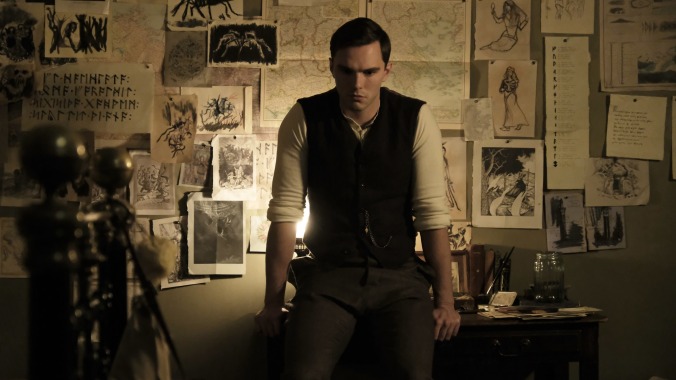I don’t claim to speak Elvish (or “Quenya,” as the most fully-formed version is actually called), but as someone who’s seen The Lord Of The Rings trilogy countless times, the drunken Tolkien sounded like he was babbling in the same Elvish language spoken by Arwen, Elrond, and Galadriel in the film adaptations. In Tolkien, the scene piques the interest of a philology professor, who says he detected Finnish—the language Tolkien drew heavily from when crafting Quenya, the High-Elf language. (Tolkien eventually created six different Elvish languages.)
But, as Tolkien director Dome Karukoski told The A.V. Club, that scene takes place when Tolkien was still in university, when he was just beginning to create the mythology of Middle-earth. Tolkien wrote the languages first, drawing much of his stories and characters from the words he made up for them, letting the words and languages be the driving forces, in a way. Tolkien’s first endeavor was The Silmarillion, the backbone of the mythology he’d draw on when writing The Hobbit and especially The Lord Of The Rings. But he hadn’t fleshed out the elves yet, even though he was creating the language that would eventually be spoken by them.
“He’s thinking about fairies, so what he shouts is more a language of fairies,” Karukoski told The A.V. Club about the scene. To make the language accurate to the time, the director worked with a linguist to come up with a sort of proto-Elvish language. “Tolkien was using the Finnish language, to the point where he was even learning Finnish grammar,” says Karukoski, who is himself Finnish. “So we used that as a base.” He and the linguist, who specializes in Anglo-Saxon language, reverse-engineered Tolkien’s Elvish into how it might have sounded at this earlier stage in Tolkien’s life.
And what is Tolkien saying? “He’s citing Christ, he’s looking for the heavens for an answer because he’s lost love,” Karukoski says. “He’s looking at the northern star and that forms an idea in his mind—the idea of the Eärendil.” (Eärendil appears in The Silmarillion. He’s a child of men and elves who carries the morning star, the jewel called “Silmaril,” on his brow. Galadriel gives Frodo a phial with the light of Eärendil in The Fellowship Of The Ring.)









































